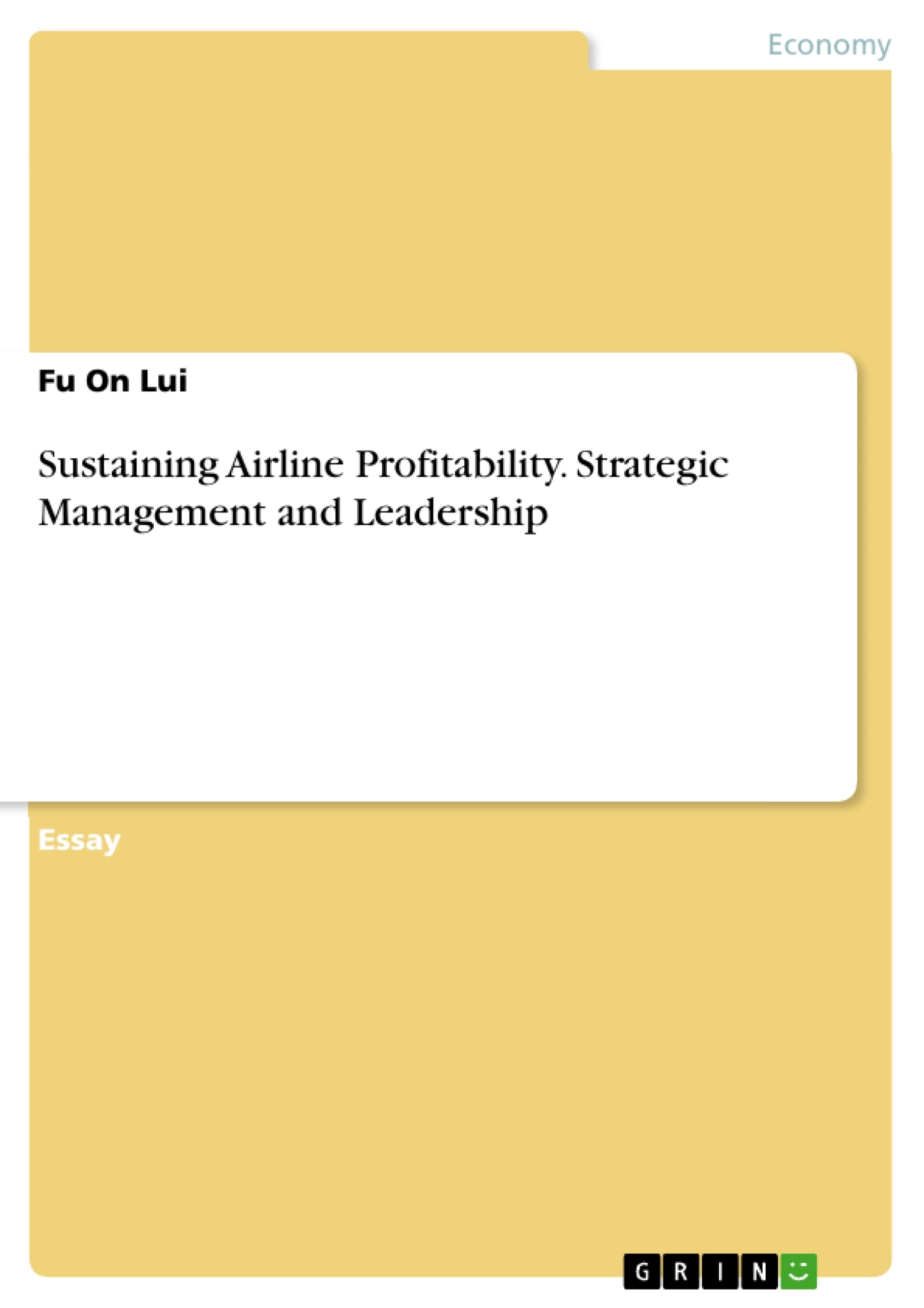The commercial airline is an extremely competitive, safety-sensitive, high technology service industry. People, employees and customers, not products and machines, must be an arena of organization's core competence.
Sustaining airline profitability, ensuring safety and security, and developing adequate air transportation infrastructure are the important challenges to the airlines.
In the following chapters, the strategic reasons that lead Singapore Airline (SIA) success will be discuss with strategic frameworks.
Inhaltsverzeichnis (Table of Contents)
- Question 1
- 1.1 Introduction
- 1.2 Reasons lead Singapore Airline Success
- Brand Reputation
- Early Disclosure to Competition
- Global Revenue Base
- Strategy of Alliance and Acquisition
- Service Excellence through Staff Development
- Cost Leadership Strategy
- 1.3 PEST Analysis
- Political Factor
- Economic Factor
- Social Factors
- Technology Factors
- 1.4 Cost Leadership Strategic at Singapore Airline
- Question 2
- 2.1 Concept of Strategic Drift
- 2.2 Case Analysis - Strategic Drift in RIM
- 2.3 Case Analysis - Strategic Drift in NOKIA
- 2.4 Suggestion and Conclusion
Zielsetzung und Themenschwerpunkte (Objectives and Key Themes)
The text aims to analyze the strategic reasons behind the success of Singapore Airlines (SIA), a global airline known for its exceptional performance and service excellence. It uses SIA as a case study to explore key strategic frameworks and factors that contribute to sustainable success in the highly competitive airline industry.
- Strategic Analysis of Singapore Airlines
- Factors Contributing to SIA's Success
- PEST Analysis of the Airline Industry
- Strategic Drift and its Impact on Businesses
- Case Studies of Strategic Drift in RIM and NOKIA
Zusammenfassung der Kapitel (Chapter Summaries)
The text begins with an introduction to the airline industry, highlighting its complexities and challenges. It then delves into the specific reasons for SIA's success, examining factors like brand reputation, early disclosure to competition, global revenue base, strategic alliances, service excellence through staff development, and a cost leadership strategy.
The text further analyzes the impact of the political, economic, social, and technological environment on the airline industry through a PEST analysis, providing insights into the external factors that influence SIA's strategic decisions.
Schlüsselwörter (Keywords)
The text focuses on key topics such as strategic analysis, airline industry, competitive advantage, brand management, service excellence, cost leadership, PEST analysis, strategic drift, case studies, RIM, NOKIA, and strategic management.
- Quote paper
- Fu On Lui (Author), 2012, Sustaining Airline Profitability. Strategic Management and Leadership, Munich, GRIN Verlag, https://www.grin.com/document/341869



